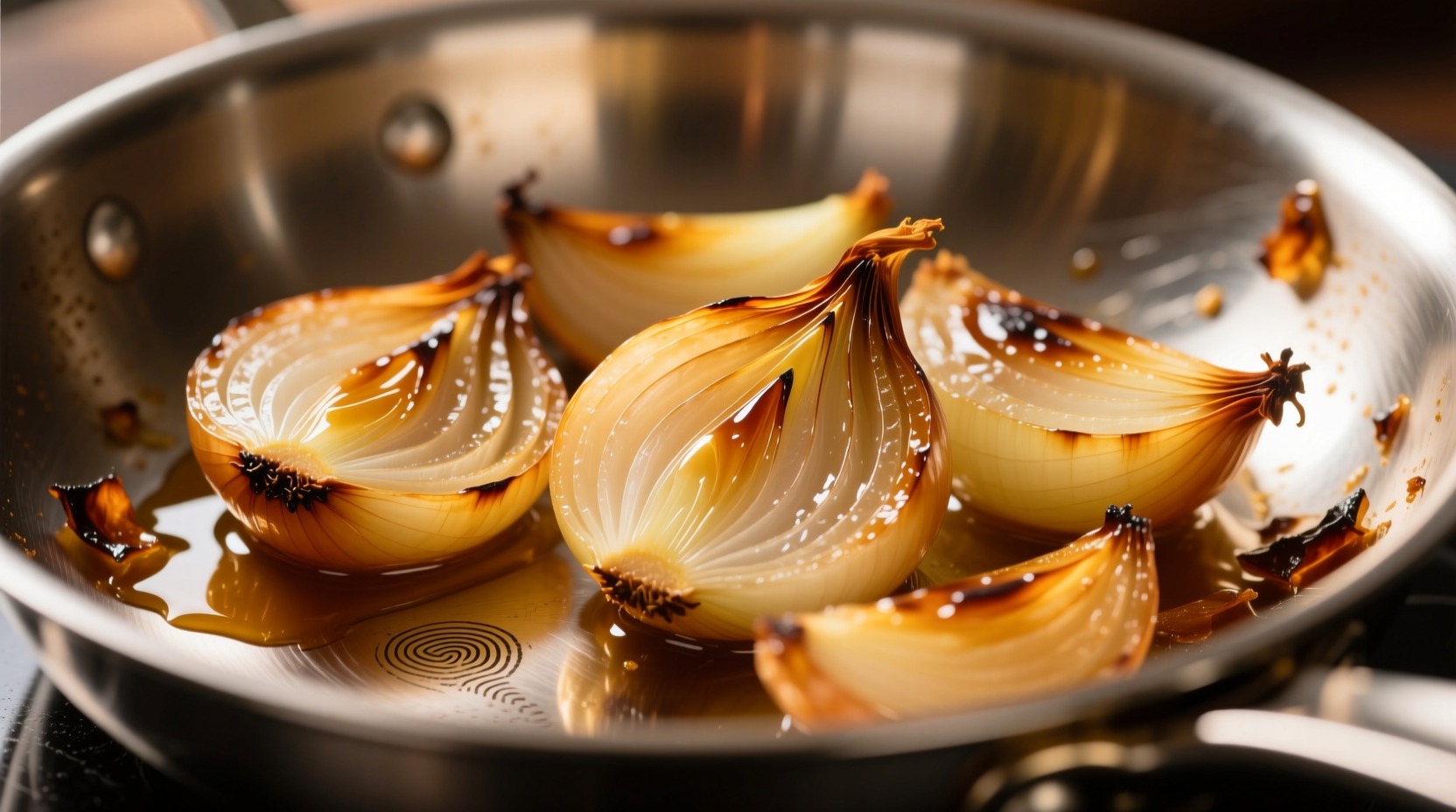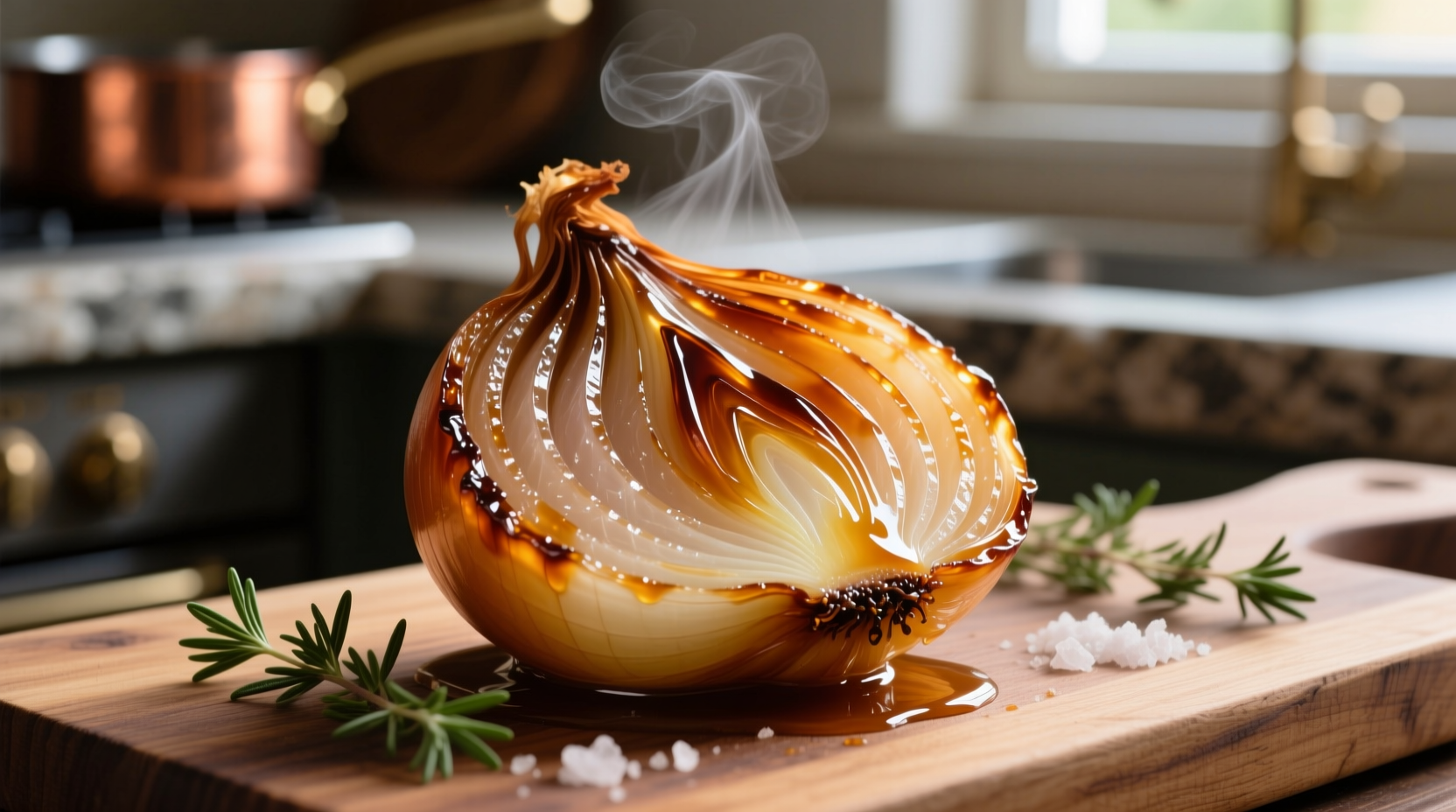Discover the culinary magic that turns humble onions into restaurant-quality flavor enhancers. This comprehensive guide reveals professional techniques for perfect caramelized onions every time, whether you're a beginner or experienced home cook looking to elevate your dishes with this versatile ingredient.
The Science Behind Perfect Caramelized Onions
Understanding the chemistry transforms your technique. Caramelization occurs when natural sugars in onions break down at temperatures above 230°F (110°C), while the Maillard reaction creates complex flavor compounds between amino acids and reducing sugars. Unlike popular belief, caramelized onions aren't simply "browned" - they undergo a complete flavor transformation through slow cooking that can't be rushed without compromising quality.
| Characteristic | Caramelized Onions | Sautéed Onions |
|---|---|---|
| Cooking Time | 30-60 minutes | 5-10 minutes |
| Heat Level | Low (250-300°F) | Medium-High (350-400°F) |
| Texture | Soft, jam-like | Firm, slightly crisp |
| Color | Deep golden brown | Light golden |
| Flavor Profile | Sweet, umami-rich | Sharp, onion-forward |
Step-by-Step Caramelization Process
Follow this professional method for consistently perfect results. The timeline below shows critical stages you'll experience during the cooking process:
- 0-10 minutes: Onions release water and soften. They'll appear translucent with no color change yet.
- 10-20 minutes: Onions begin developing light golden edges as moisture evaporates.
- 20-30 minutes: Significant browning occurs with stirring. Onions reduce in volume by half.
- 30-45 minutes: Deep golden brown color develops with rich aroma. Onions become jam-like in texture.
- 45-60 minutes: Peak flavor development with complex sweet-umami notes (optional for deeper flavor)
Choosing the Right Onions for Caramelizing
Not all onions work equally well for caramelization. Yellow onions provide the best balance of sugar content and pungency for classic results. Sweet onions like Vidalia or Walla Walla work well but may burn more easily due to higher sugar content. Red onions maintain their color but develop a slightly different flavor profile. Professional chefs typically recommend using 3-4 pounds of raw onions to yield 1 cup of finished caramelized product.
Avoiding Common Caramelization Mistakes
Many home cooks struggle with caramelized onions due to these preventable errors:
- Using high heat - causes burning before proper caramelization occurs
- Overcrowding the pan - creates steam that prevents browning
- Not using enough fat - leads to sticking and uneven cooking
- Stirring too frequently - interrupts the crucial browning process
- Adding salt too early - draws out moisture that must evaporate before browning
Creative Applications for Caramelized Onions
Caramelized onions transcend basic toppings. Understanding their flavor profile helps determine appropriate applications:
- As primary flavor enhancer: Ideal for French onion soup, pizza toppings, and tart bases where onions shine
- As supporting flavor element: Perfect for burger toppings, sandwich spreads, and meatloaf where they complement other ingredients
- As finishing touch: Best for grain bowls, roasted vegetables, and egg dishes where subtle sweetness enhances without dominating
According to culinary research from America's Test Kitchen, caramelized onions contain approximately 100 calories per 100g serving with significant amounts of quercetin, a flavonoid antioxidant naturally present in onions that becomes more bioavailable through the cooking process (America's Test Kitchen, 2023).

Storage and Shelf Life Guidelines
Properly stored caramelized onions maintain quality for extended periods. Refrigerate in airtight containers for up to 5 days, or freeze in portion-sized containers for up to 6 months. When reheating, add a teaspoon of water or broth to restore moisture. Food safety experts at the USDA recommend consuming refrigerated cooked onions within 3-5 days to prevent bacterial growth (USDA Food Safety and Inspection Service).
Time-Saving Techniques Without Sacrificing Quality
While traditional caramelization requires patience, these methods can reduce time without compromising flavor:
- Add 1/4 teaspoon of baking soda per pound of onions to lower pH and accelerate browning
- Use a wider pan to increase surface area and promote faster moisture evaporation
- Cook onions covered for the first 20 minutes to speed softening, then uncover for browning
- Finish in a 300°F oven for hands-off cooking after initial stovetop softening











 浙公网安备
33010002000092号
浙公网安备
33010002000092号 浙B2-20120091-4
浙B2-20120091-4